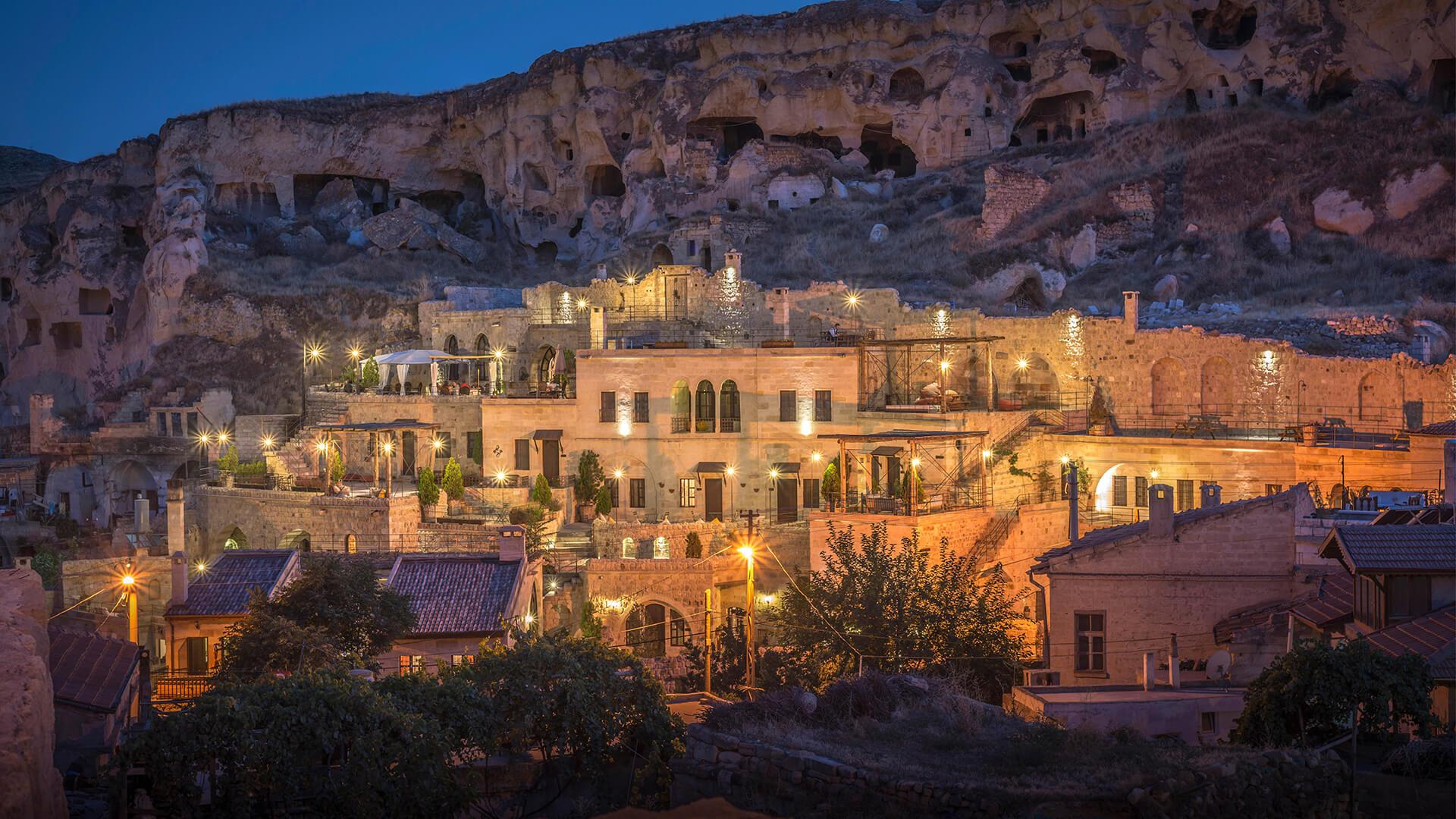
The fairy chimneys of Cappadocia are nothing short of a geological wonder. These otherworldly rock formations, which are tucked away in the Central Anatolia region of Turkey, seem to be straight out of a fantasy film. The pointed, jagged rocks here reach skywards, sculpted by volcanic activity and subsequently shaped by erosion over the next few million years.

These famous chimneys are dotted with indentations; little holes in the rocky pinnacles which are just about big enough for a fairy to set up home inside.
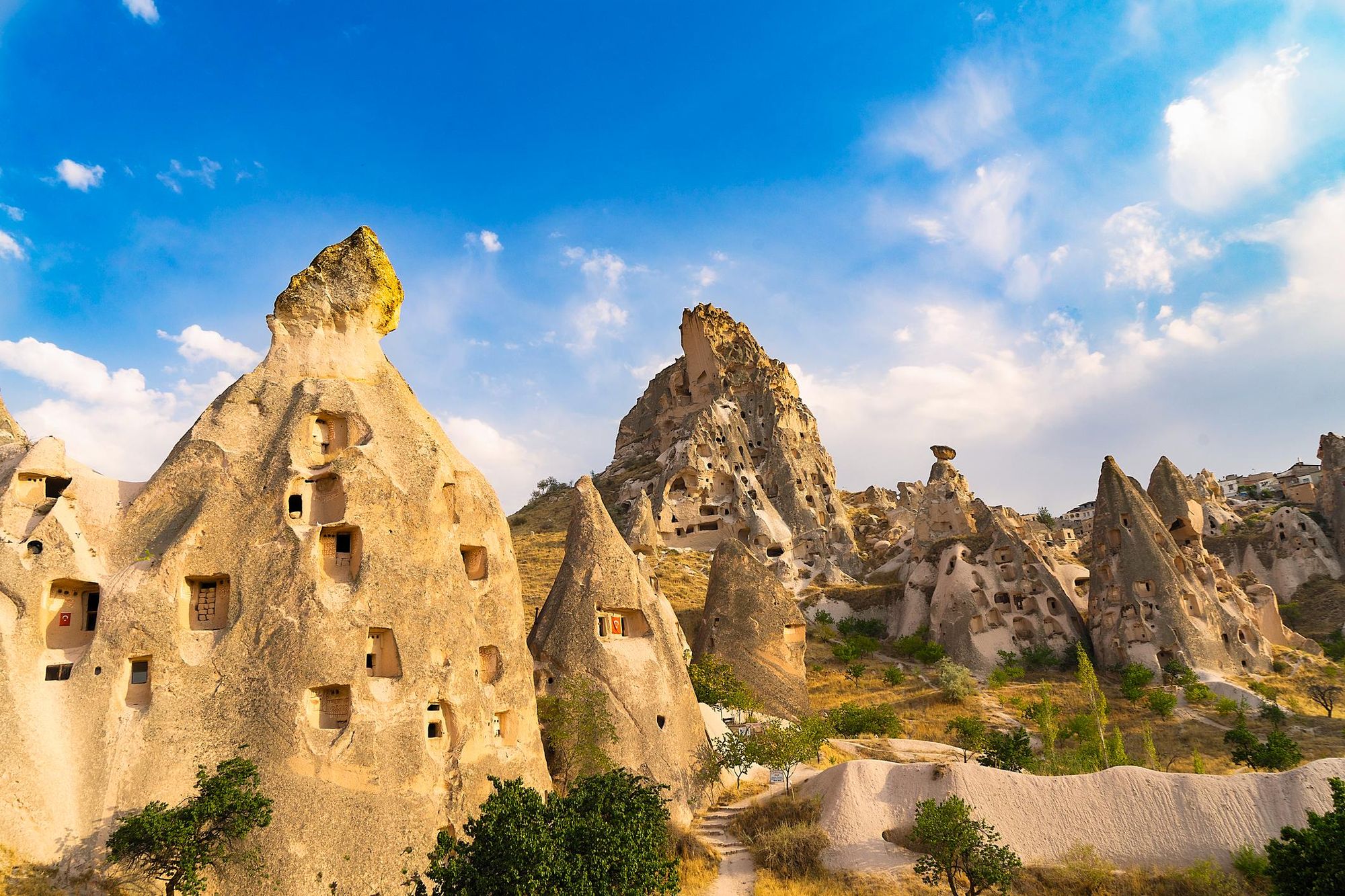
Travel 15 minutes west of the chimneys, to the ancient town of Ürgüp, and you can stay overnight in the carved rocks of Cappadocia too - in style.
Sculpted into the rocks of Ürgüp, within the Göreme National Park and Rock Sites of Cappadocia UNESCO World Heritage site, you’ll find some remarkable architecture. This includes Dere Suites, a boutique hotel built with Nevşehir-specific kepez stone, in a style rooted to this area. Humans have been carving homes from these rocks for millennia, and now visitors can sleep in the caves.
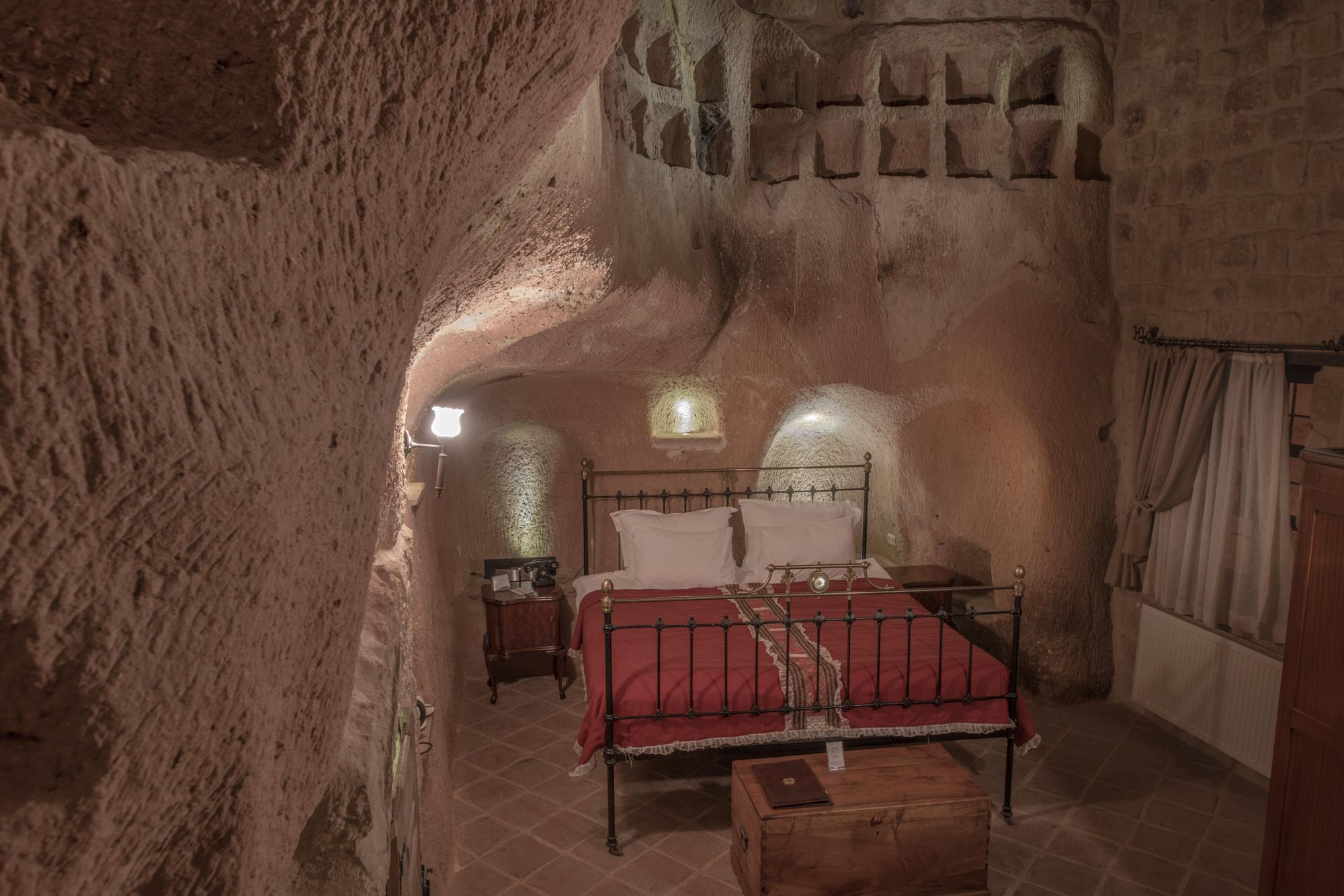

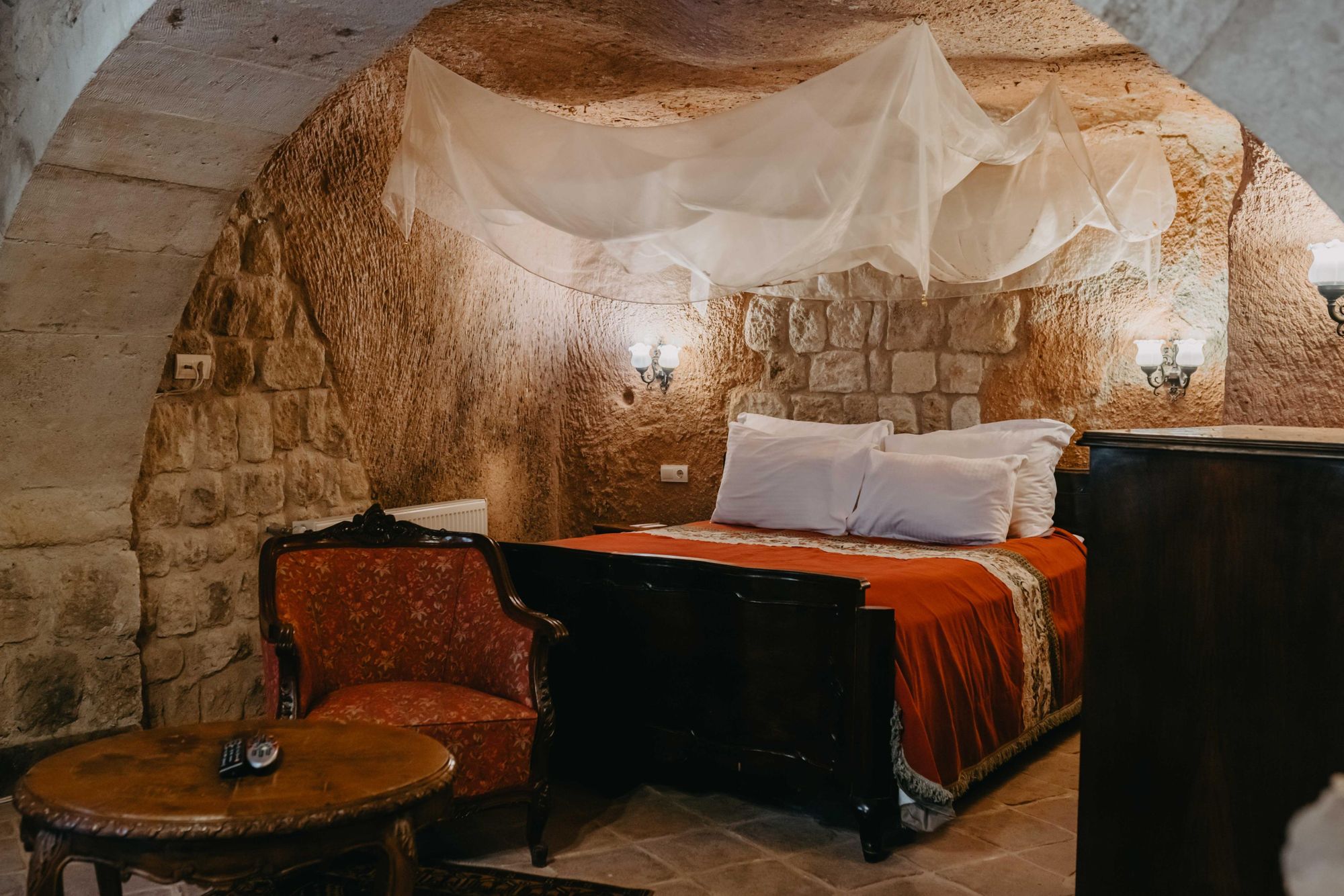
Ürgüp is a place known for its quiet, boutique, authentic feel. It’s also a thriving hub for hiking - hence why it serves as the base for Much Better Adventures' 2026 trekking and exploration epic in Cappadocia. The trip includes guided walks around the rock formations of the area, evenings dining at standout local restaurants and opportunities to taste the local wine in atmospheric cellars.
You get a sense of both the landscape and the history that shaped it.
"Compared to the busier, tourist-focused Göreme, Ürgüp has a quieter, more authentic feel, with boutique restaurants, wine houses, and artisan shops," says Marta Marinelli, who designed the trip for Much Better Adventures. "It’s a perfect base to experience the landscapes while enjoying a more local atmosphere."

Speaking about the wider area, Marta adds: "Cappadocia is one of the most unique landscapes on earth. The mix of fairy chimneys, hidden valleys, ancient cave dwellings, and dramatic canyons is truly one of its kind.
"Over just a few days here you can hike through Rose, Red, Love, and Ihlara Valleys, climb up to Uçhisar Castle for sweeping views, descend into the underground city of Derinkuyu, and even drift above it all on a sunrise hot air balloon ride. Add in the warm hospitality, unique cave hotels, and the food and wine traditions, and you have a destination that is a real pleasure to explore."
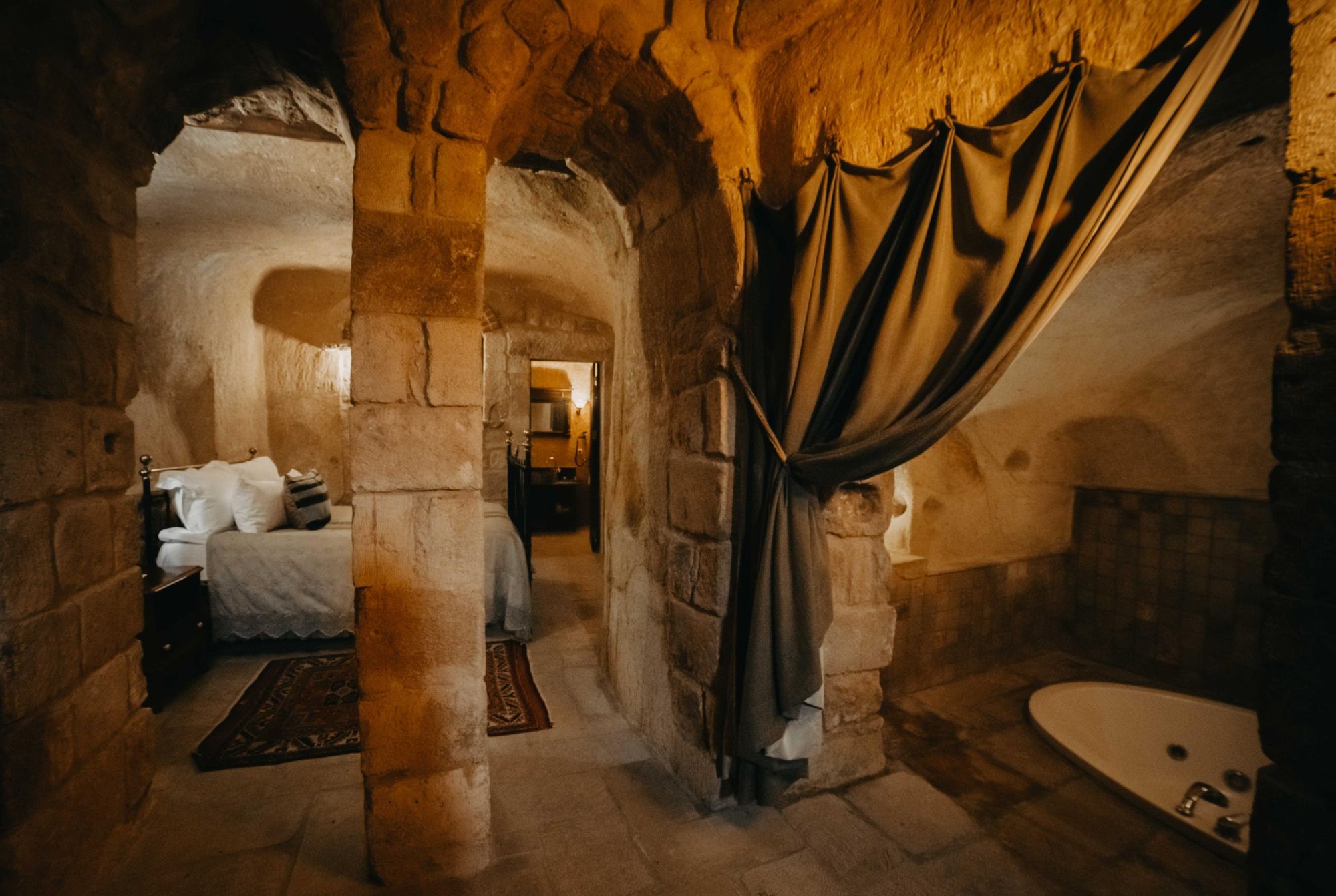
The caves around Cappadocia have a vibrant history of human habitation. This area once lay on the Silk Road trading route, and it was raided by various empires in that time - from the Hittites and Persians to Romans and Ottomans.

It was during the Roman period that Christians, who were persecuted in Turkey, fled to Cappadocia. Specifically they fled to Göreme, which lends its name to the Göreme Historical National Park - a town nine kilometres to the east of Ürgüp.

After figuring out that the tuff these chimneys were made of - a porous rock formed from ash, then covered in basalt - was easily shapeable, the new residents set about excavating the stone to create hideouts. They created caves in the area, as well as churches and stables, built into the soft rock formations all around them. You can still see these underground networks in Cappadocia. The holes in the rock were created to allow air to circulate in the caves below.
You sleep in a beautifully converted cave hotel on our trip, carved into the soft volcanic rock. The rooms are comfortable, with stone-arched interiors...
UNESCO describes the site as “one of the world's most striking and largest cave-dwelling complexes."
Today, some of these caves have been repurposed into beautiful accommodation.
"You can sleep in a beautifully converted cave hotel on this trip, carved into the soft volcanic rock," says Marta. "The rooms in Dere Suites are comfortable, with stone-arched interiors, modern amenities and terraces overlooking the valleys."
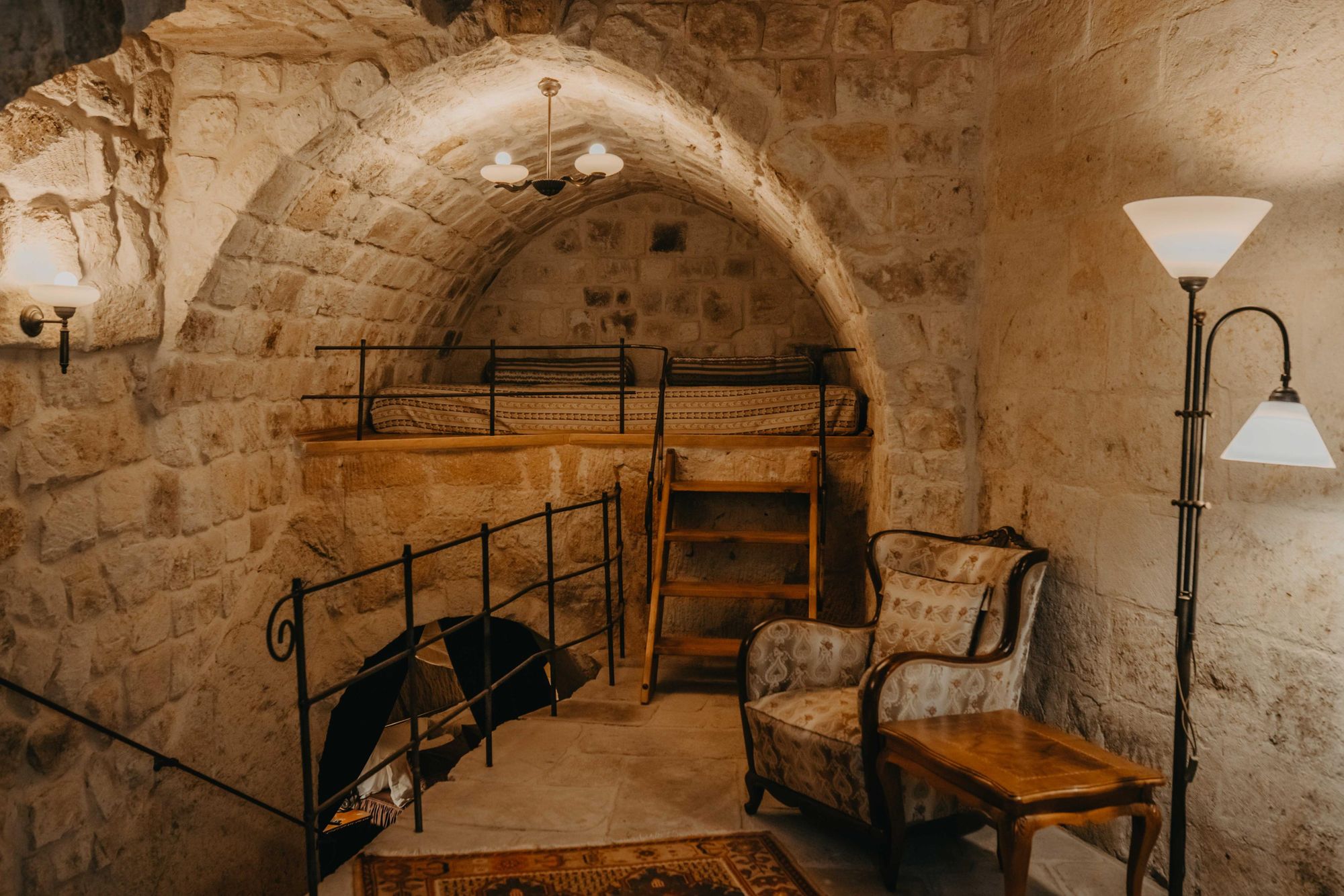
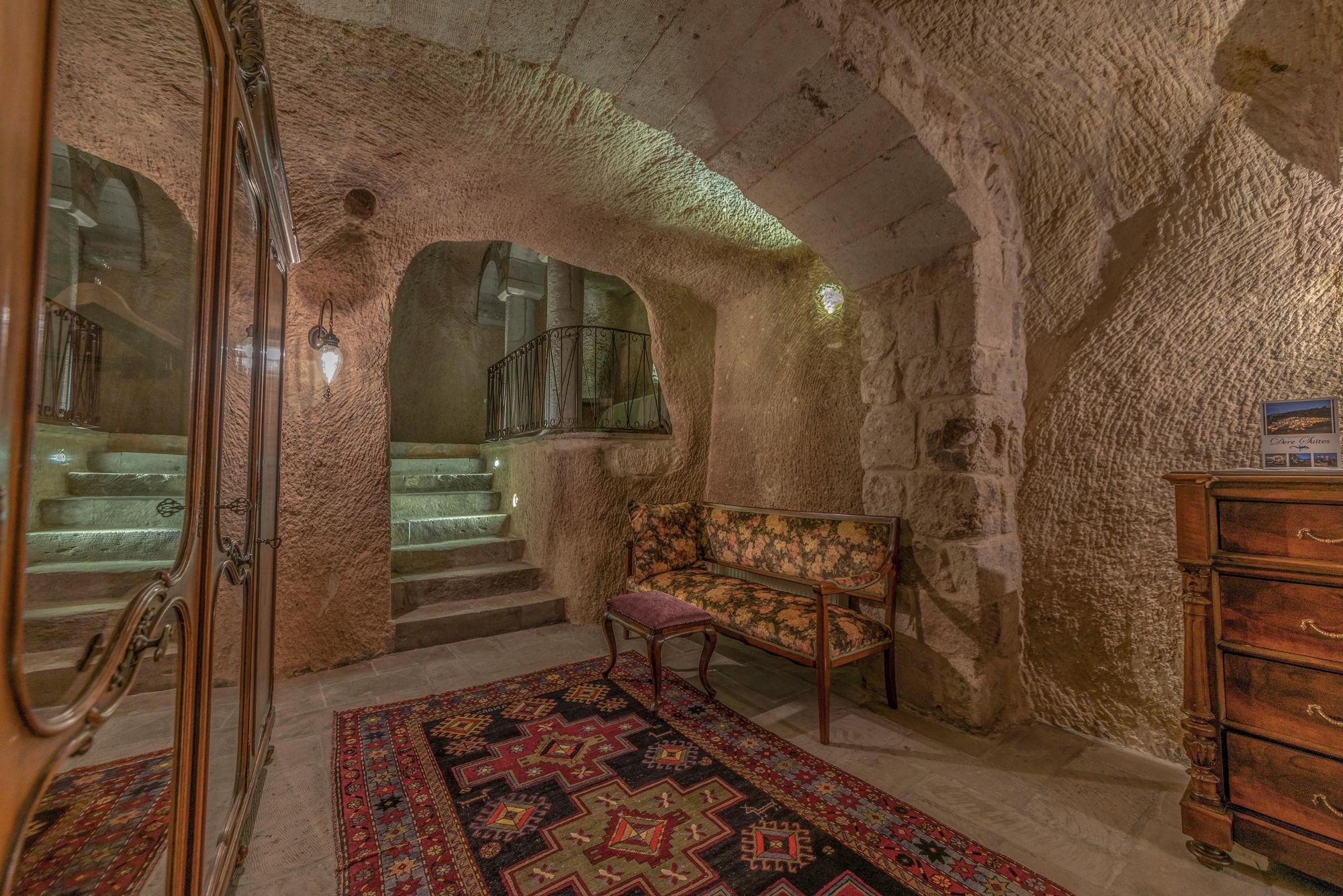
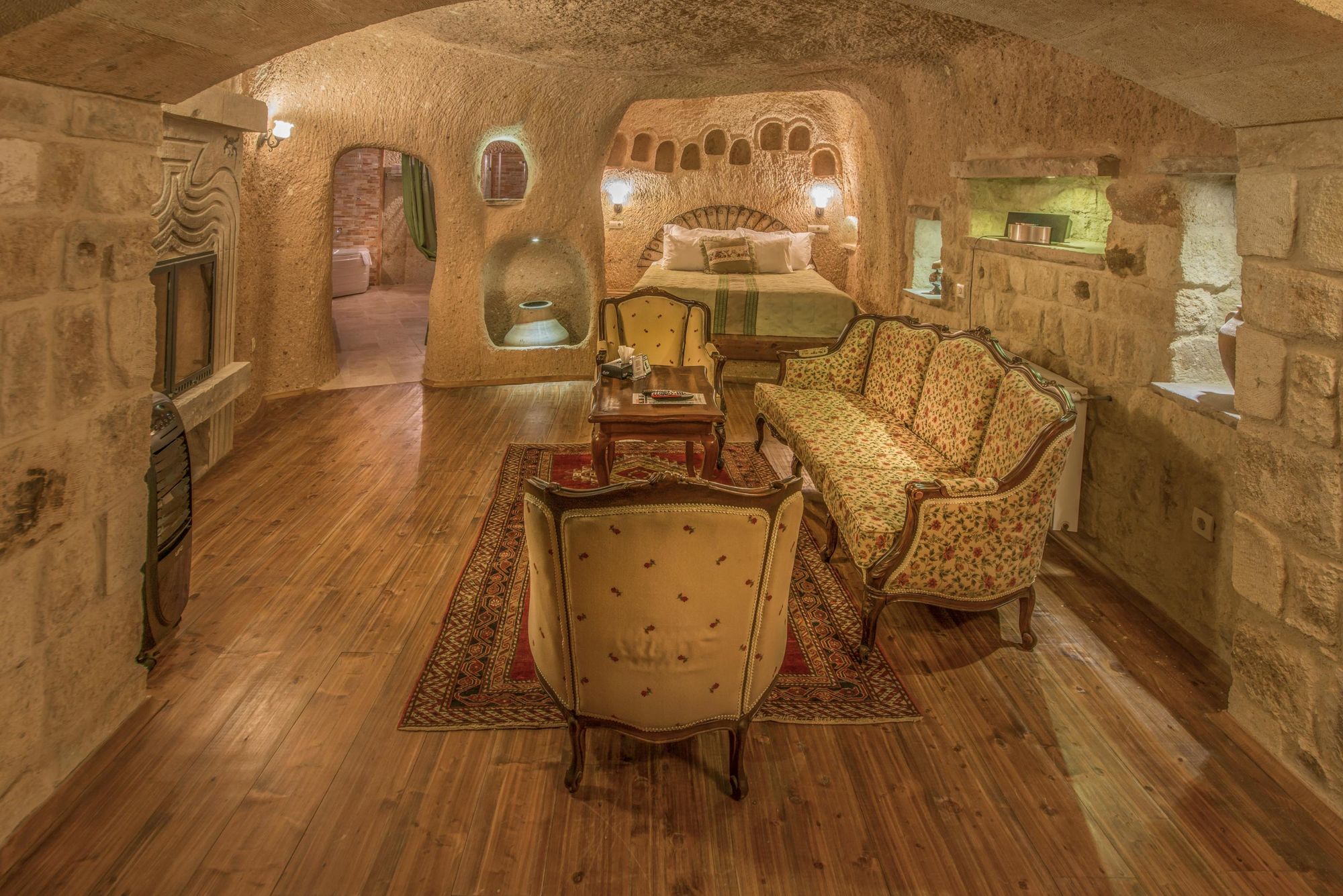
The boutique hotels provide a luxurious offering, so you can sample the culture, the local wine and the hiking, and return to a stylish double bed each evening, without ever feeling like you’re leaving the adventure. You’ll be utterly immersed.
The mix of fairy chimneys, hidden valleys, ancient cave dwellings, and dramatic canyons is truly one of its kind.
One of the most famous things to do in Cappadocia is to take a balloon tour, of course. When the weather allows, a convoy of hot air balloons takes to the sky each morning. It’s a sight to behold both from the balloons, and from the ground.
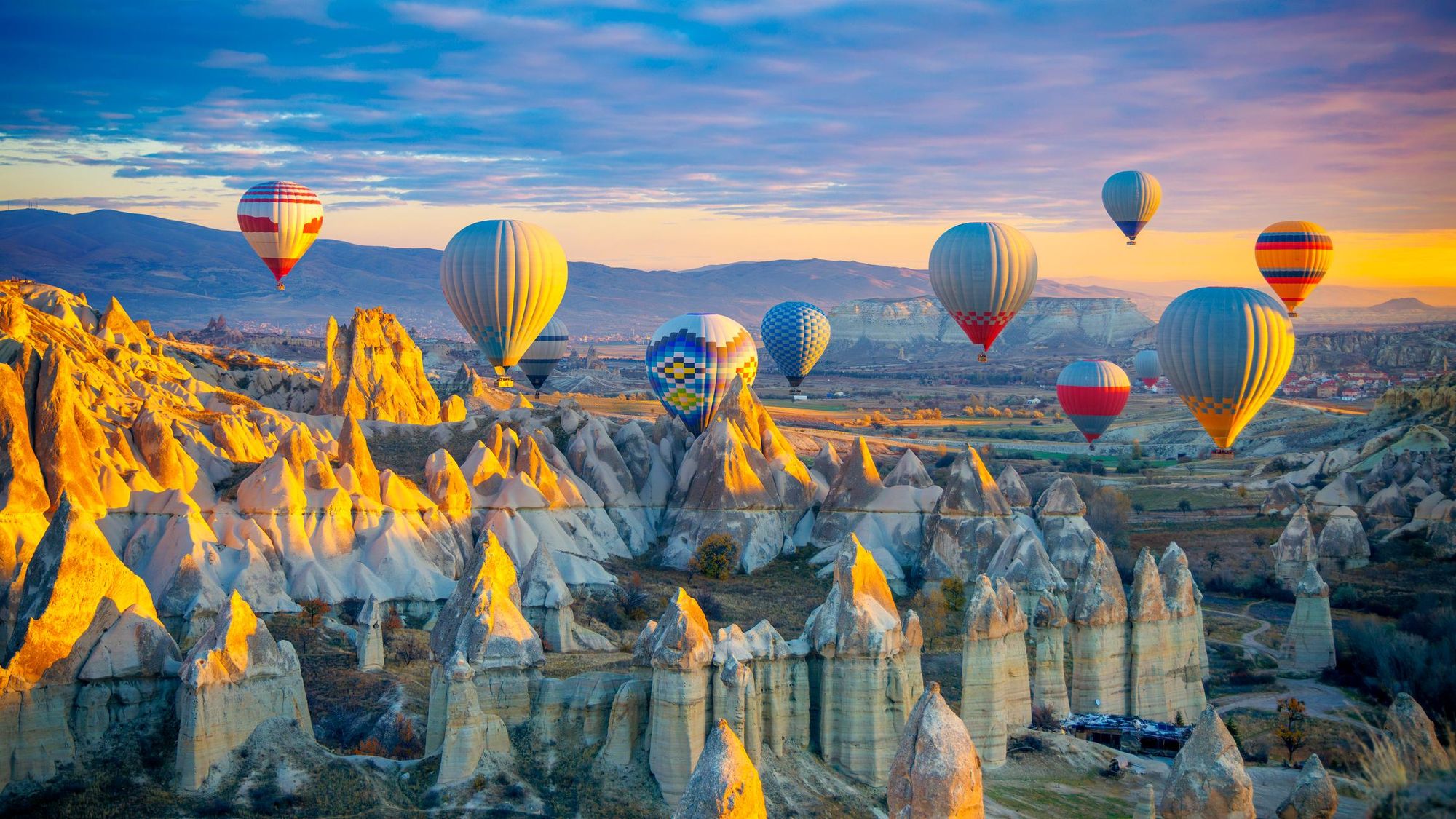
As mentioned above, there is an abundance of hiking in Cappadocia too.
"Hiking here is varied, scenic, and accessible," says Marta. "Trails wind through valleys filled with sculpted cliffs, orchards, and hidden caves, often linking villages along the way. Expect half-day hikes of three to four hours, with gentle climbs and rewarding viewpoints rather than strenuous mountain trekking."

Head to Uçhisar Castle, the highest viewpoint in Cappadocia, for a view out over the fairy chimneys. The scene changes dramatically depending on the light and the time of day. The Red and Meskendir Valleys, known for their pink-hued cliffs, natural tunnels and hidden cave chapels, lie beyond - guiding you to Cavasun, a former Roman settlement with stone carvings dating back to 150 BC.
Marinelli continues: "Routes like the Red and Rose Valleys are striking with changing colours, while the Ihlara Valley offers riverside trails dotted with ancient cave churches. Every trail is immersive. You get a sense of both the landscape and the history that shaped it."
This is where the feel of a fairytale meets the remarkable reality of the past.
Inspired? Hike and Explore the Trails of Cappadocia: The 2026 Edition and browse the new Premium Collection now!


